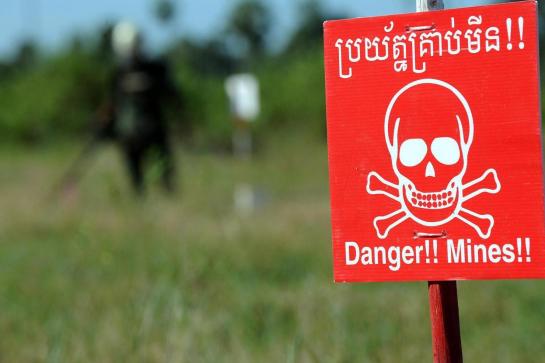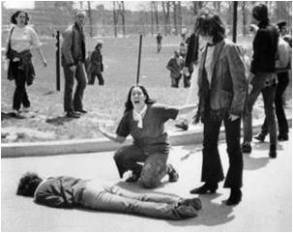
Search and destroy. 11,000 remnants of civil strife 30+ years ago. CMAC is quietly ridding Cambodia of a stockpile of potential trouble. (Photo from CNE Cambodia News.)
Decades have passed since the final shots were fired between the Khmer Rouge soldiers and other Khmer, with some of the last battles taking place in Kampong Kdei, East of Siem Reap. A friend of mine has a house there that boasts bullet holes from the Khmer Rouge.
But in all the upheaval of the Pol Pot years and after, troops were armed mostly with Chinese rifles, though I would not be surprised if some Russian armaments and perhaps a smattering of US firearms were included in the mix – carry-overs from the Vietnam war.
Since the conflicts most attention has been paid to landmine clearance, and this work has been chiefly co-ordinated by the Cambodian Mine Action Centre (CMAC) which is Cambodia’s leading de-mining organization,.
CMAC currently has 1,715 staff across Cambodia, according to the CMAC website, and over recent years they have supplemented their anti-mine activity with the repossession of firearms with the objective of destroying these to promote peace in Cambodia.
On March 1st CMAC Director Heng Ratana (picture above) announced that the Cambodian Mine Action Center will transfer and deliver light weaponry collected from more than 11,000 people for destruction. The weapons are a mix of war remnants discovered in the ground, military firearms and homemade rifles, reports the CNE Cambodian News English service. (Follow them!)
Cambodia must be riddled with these remnants of war. I recall seeing two or three Chinese rifles hanging in the local policeman’s office near our school in Bakong. In 2016 the law was modified to ensure that police could only carry guns while on duty: but not when they are off-duty.
While firearms are for most people illegal to possess armaments are still permitted for higher ranking officers in the military, even outside ‘office hours.’
In 2016 The Phnom Penh Post reported:
The early 1990s saw countless guns fall into civilian hands as the civil war wound down. Since 1998, the government has embarked on a gun amnesty and confiscation drive that it claims has seen hundreds of thousands of weapons taken off the streets.
But while overall recorded gun crime was down this year (2016) compared with 2014, the number of those killed with firearms went up, according to official figures.
Click here for a story about road safety.







You must be logged in to post a comment.